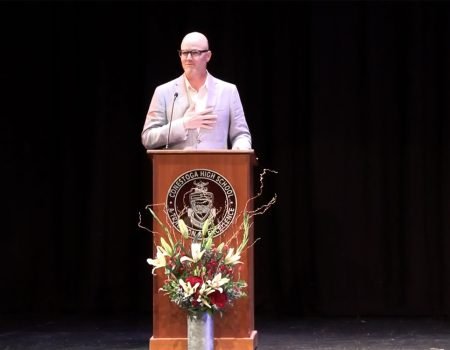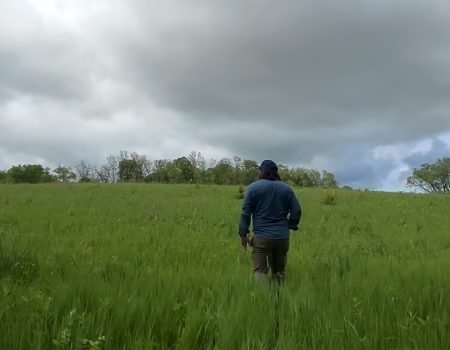Restoration
New York City is defined by its neighborhoods: Hell’s Kitchen, Upper West, Upper East. Each has its place, it’s people, its institutions and landmarks.
When Maggie was a toddler, we used to walk around the Upper East Side singing “Who Are The People In Your Neighborhood,” while introducing ourselves to everyone from the dry cleaner, to the postman, to the guy at the deli.
Abbi and I read the paper. We voted. Were part of something.
In twenty five years, though, I never felt like I was part of a neighborhood; once untethered from my apartment or work, I was a ghost walking invisible amongst strangers. I often felt like one of a faceless many who just lived in a place for a time, passing through.
Moving to Wilmington, Delaware, has been like waking from a long dream. It’s only as I settle into the hiss of the wind through the trees, the flare of the sun rising over the senator’s backyard, the rhythm of the joggers and the dog walkers. It’s only in noticing that I see what I was missing.
Here, I am beginning to feel like thread in a coarser civic fabric: lawns and trees, shutters and hedges, stop signs and speeders, storms and floods, hopes and dreams.
A few weeks ago, when the pavement still rippled with heat, I skateboarded a few blocks south to our local Episcipol church, Immanuel Highlands, to meet its new clergy, Reverend Curt Kennington.
The 150+ year old church he’d come to inherit in the middle of COVID (following a career as a rock ‘n roll keyboardist) was in the midst of a massive restoration, one endeavoring to remedy a grave, architectural mistake (or miscalculation) one hundred years in the past.
It wasn’t just Reverend Kennington’s church and parish that were at risk, though, but also its historic stained glass, illustrated by local Delaware River Valley artist and Wyeth protege, Frank Schoonover.
I lead communications for our community association (a thing I didn’t know was a thing when I lived in New York, and), which affords me some leeway to pursue some of these neighborhood stories (as many as my time will allow, really), to draft off the radical intimacy of this tiny town – Wilmington’s population is, after all, roughly ⅓ that of the Upper East Side, and less than one percent of New York City.
In this radical intimacy, I am party in new ways to the everyday heroism of a neighborhood. The clergy boosting attendance. The shop owner discounting merchandise. The coffee shop. The post office.
One year in our new neighborhood and it’s still a revelation – a shooting star across the back patio at precisely the moment when neither our nor the neighbor’s motion-detected floodlights are shining in my eyes.
Such was my experience with Curt and Vince a few weeks ago now at Immanuel Highlands. And here, from the pages of the Highlands Neighborhood Community Association website, is that story…
Historic Restoration Project Nears Completion
Since summer, Immanuel Highlands Episcopal Church’s historic façade and breathtaking stained-glass windows have been shrouded in scaffolding, tarp and plywood as the parish completes a restoration project more than one century in the making.
The church was established in 1884 by, amongst others, Bancroft Textile Mills President, John Bancroft.
That modest wooden church, built within walking distance of the mill, was consecrated on Advent Sunday, 1884, at the corner of Riverview and 17th Avenues. It was replaced in 1914 by the current stone structure.
Today, the modified gothic church is home to a three manual, 1,994 pipe Austin Organ, plus more than 20 historically and artistically significant stained glass windows – including 17 by acclaimed local illustrator Frank Schoonover.
For Reverend Curt Kennington, who joined the parish during COVID lockdown, the church’s historically and artistically significant sanctuary was part of its appeal.
“I stand here in the morning light and think to myself, ‘This is miraculous: the beauty of the colors, all the creatures of the sea – whales and giraffes… lightning, planets.’ They show a diversity of human life, people of every color. These windows contain so many images of who we are as people.”
The people who make up Immanuel’s parish have long been aware that their church was slowly crumbling.
The primary culprit? Wissahickon Schist, and some poorly rendered previous restorations.
Wissahickon Schist is used primarily as a decorative rather than a weight-bearing stone – though numerous area buildings (like those on the Bryn Mawr College campus) are made of the stuff. The rock tends to be rich in mica and thus strongly foliated (sheet-like) and fissile (easily split). Ergo the soft rock, and serious leaks.
Those leaks put those miraculous windows, that priceless organ, and everything around them in grave risk.
To say nothing of the parishioners.
On Christmas Eve last year, torrential rains led to water flowing through Schoonover’s “Fisherman’s Window,” soaking interior rock walls and pooling at parishioners’ feet.
Parish Site Coordinator, Beth Burnam, knows only too well: her feet got wet that night.
Burnham, alongside Reverend Kennigton, Project Treasurer Ken Germain, architects, historic restoration specialists, parishioners, and supporters, are in the final stretch of a restoration project, dubbed Cornerstone II, that began in 2019 when it became apparent the stone was only part of the problem.
Two years, many drone flights and now, hands-on inspection and restoration, have surfaced additional challenges.
“It turns out that much of the flashing was improperly installed,” Burnham explained. “Roof ridges were poorly sealed, and some of the original roof sheathing and guttering had rotted away.”
Zavorski Masonry Restoration expects that work will be done by Thanksgiving.
“People have loved this parish church for over a century,” Burnham said. “Countless have been christened, wed, comforted, and laid to rest here.”
“We hope that, come Thanksgiving, neighbors will join with us to celebrate a dry and music-filled community church with the glorious window paintings reminding us all of our need for bread, beauty, and human love.”
I like it here.
I like skateboarding to a church, and talking with its rock star reverend. I like sharing the sidewalk with a scientist from DuPont, a cannabis entrepreneur, a record-holding college basketball coach, ballet-dancing oceanographer, and a museum director with an MFA in creative writing.
I like the sound of the wind through the leaves, and watching the moon track across the sky. Satellites.
I like walking the girls to school, and bumping into the guidance counselor on the way. And then quietly stalking herons, osprey and red tailed hawks along the Brandywine on my hike home.
I like taking out garbage.
“When I was young, most of my heroes wore capes. They were spectacular. And got a lot of attention.”
This is of course the Wisdom of Fred, speaking, I think, to what my father calls “doing the ordinary extraordinarily well.” Or, maybe just as well as one can.
“As I grew,” Mister Rogers said, “My heroes changed, so that now I can honestly say that anyone who does anything to help is a hero to me.”
Download “Friends & Neighbors” on Apple, stream on Spotify; watch on Facebook or YouTube; and subscribe to our newsletter at friendsandneighborsshow.com. “Friends & Neighbors” is a Wagner Brothers production.



